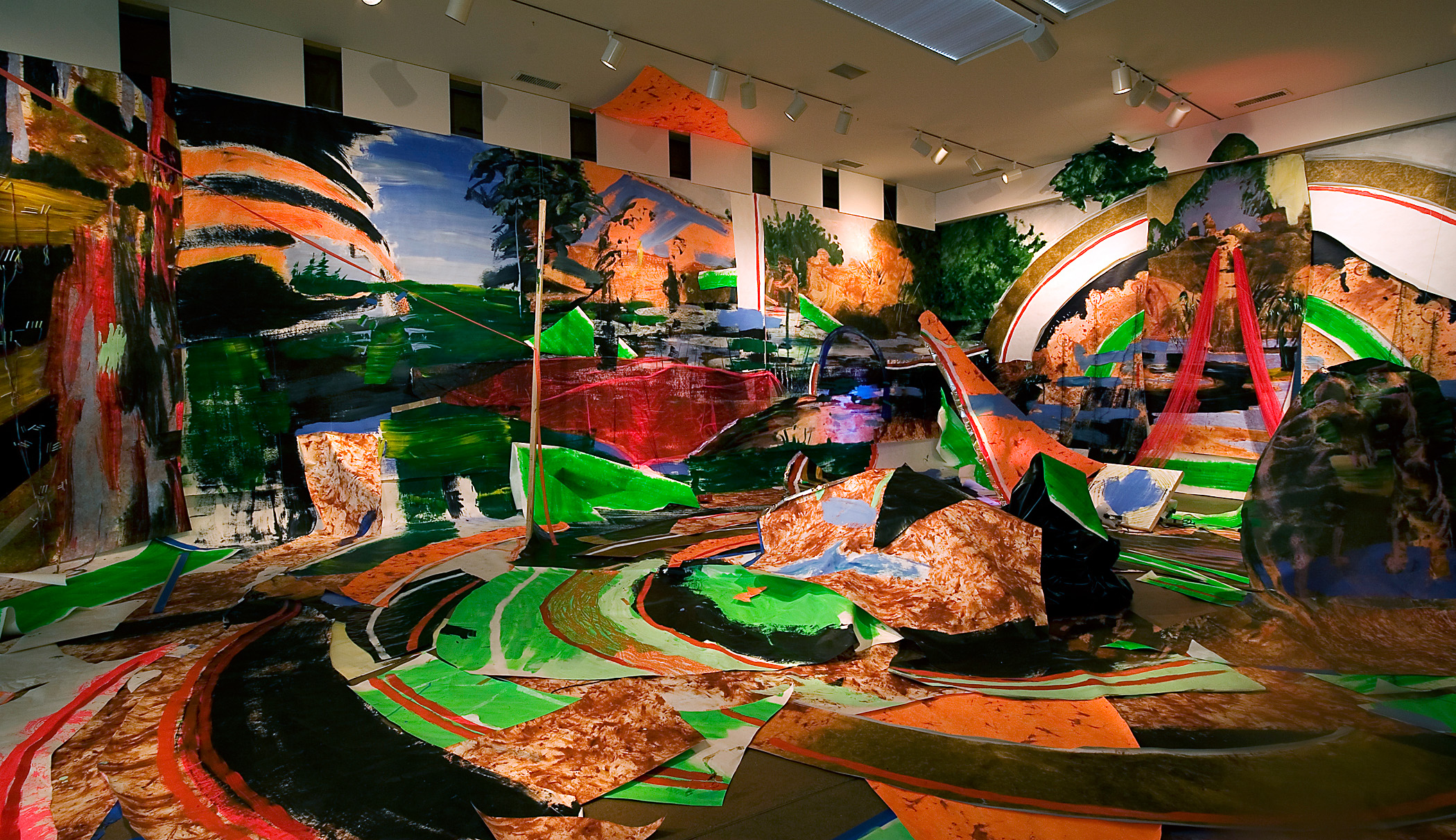The fast track to success may not always be the best way to get there.
This is what Annie Lapin learned as she took her time finding her way to UCLA’s master’s program in art. A 2007 graduate, now she is a well-regarded young painter with the upcoming installation “Parallel Deliria Iteration” that runs May 31 through Sept. 20 at the Pasadena Museum of California Art.
“I had always taken art classes, but I never thought of it as something I could pursue academically, and I was very academic,” Lapin said.
After changing her major at Yale from archaeology, Lapin graduated with an undergraduate degree in art and proceeded to take three years of travel and residency and a year of postbaccalaureate at the School of the Art Institute of Chicago before coming to UCLA.
What changed her mind was two years of being an archaeology student and spending time on an archaeological dig in Guatemala.
“I realized that academics were just as artificial or constructed as anything else, so I thought I guess I might as well take art.”
After making that decision, Lapin has devoted herself to painting and has not looked back, though she maintains her interest in archaeology. Still, her path to art as a career and UCLA’s master’s program was not direct.
“I didn’t really have that much of a plan education wise,” Lapin said. “I think I’ve thought about many other ways of being an artist, but I’m really glad I went to graduate school because I think I’ve learned how to become a part of a larger critical discourse.”
Of her choice to attend UCLA for her master’s, Lapin said, “I looked at the art that was coming out of UCLA, and I was really excited by it.”
Lapin’s art is now causing the same kind of excitement from museums, such as the Pasadena Museum of California Art that features her upcoming exhibit.
Shirlae Cheng-Lifshin is the exhibition manager at the Pasadena Museum.
“She is a painter, which is a more traditional medium,” she said. “But she is really thoughtful about her chosen media, really trying to push the boundaries of painting and explore its theoretical limits.”
The installation is part of a larger initiative the museum has to foster the growth of up-and-coming artists.
“In the past we have taken artists who may not be that well-known, brought them into the space, and encouraged them to go beyond their normal practice and create something specifically for the room,” Cheng-Lifshin said.
Lapin’s work for this exhibit incorporates not just paintings but the architecture of the entire room.
According to the Pasadena Museum’s Web site, she uses “recycled components from previous installations, discarded works from Lapin’s studio practice and new elements added in response to the architecture.” Lapin is creating what she describes as “a never-ending painting in three dimensions.”
This style of environmental installations is something that Lapin used at a gallery in Kansas last year. This piece at the Pasadena Museum developed from her work in Kansas into something completely new.
“When we first started talking about the installation she was going to do, it was going to be pretty similar to the one she had done before,” Cheng-Lifshin said. “And since she has started getting materials and bringing them into the space, she has made it more site-specific, more about the actual room that her piece is in.”
Lapin is accomplished to be featured in this exhibit already, having just graduated from UCLA in 2007. However, she is not sure how to define success.
“I think there’s no recipe for success,” Lapin said. “I’m not even sure what success means because there are different ways to define it. Does it mean that you’re making art that is fulfilling to yourself, or is it art that’s popular? I don’t know.”
